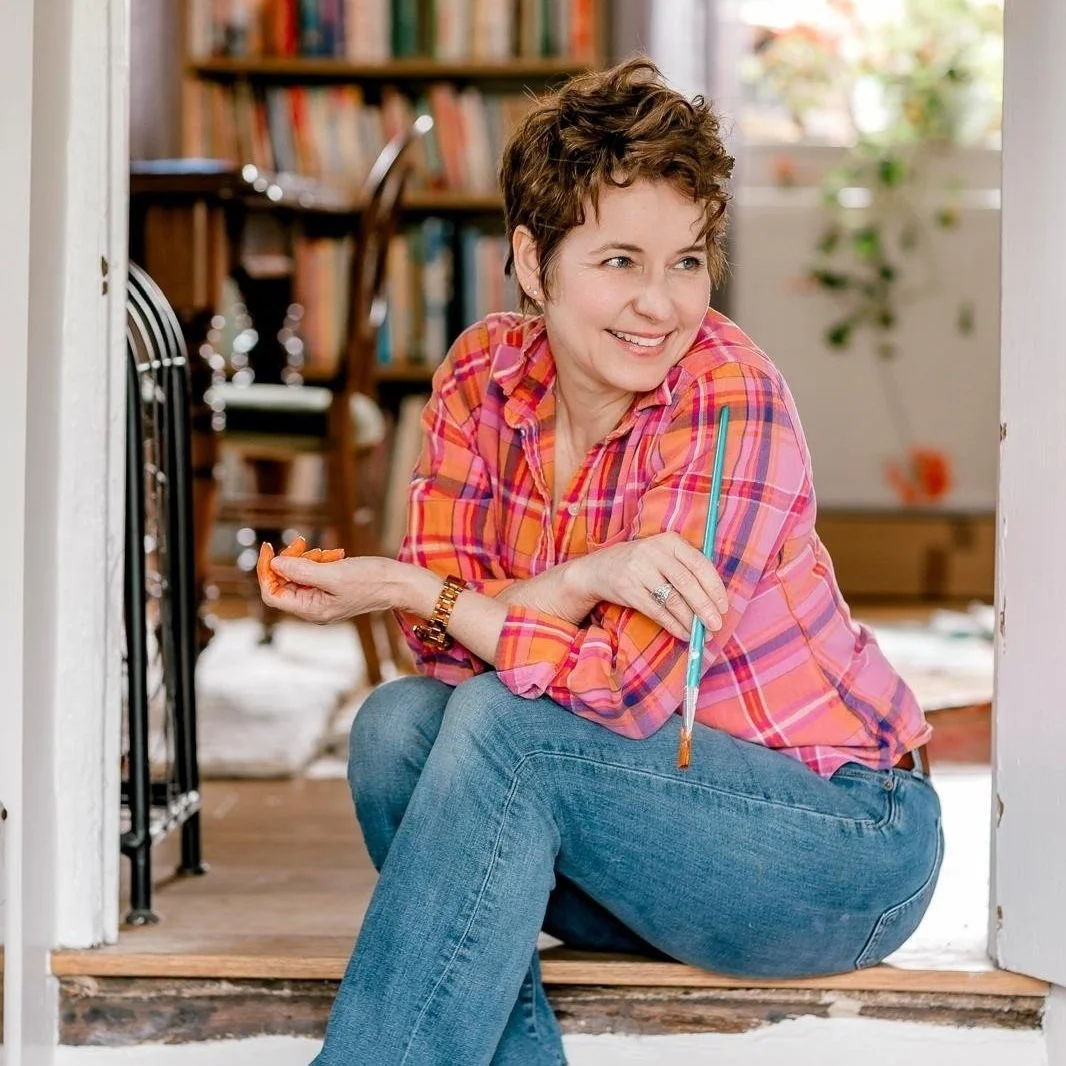Colour and Movement.
If you asked where my art comes from, each time I create I’m trying to make something unusual and provoking. Over 30 years, my style has changed and grown, like anyone trying to figure out their unique voice. What occurs to me is that the common threads uniting my body of work is about being on the move, exploring, and explaining.
You might see diversity of style but will always see colour and movement. People have told me its unusual to be a doctor and an artist, but I feel compelled to do both, colouring outside the lines, rejecting the definitions of onlookers, avoiding being conventional. I don’t want to be trapped by person place or time, nor by a style I have grown out of, because I think what I learn matures forwards into the next phase.
My art lives somewhere in the space between what I intended to do and what I did. I am endlessly curious about life and want my art to be interesting because I have been curious on an intellectual level about the stimulus for it. I’ve realised that my intention for each piece of work is not necessarily to land on somebody’s wall, it’s more to explain something that I’ve become conceptually challenged over. As the years have passed, when my geographical location or circumstance has forced a change it has propelled me into new creativity.
I understand the need to have recognizable style as an artist, but to me this is like working in one medical speciality and then changing to another. The continuity is still truly medical, and as an artist, I feel equally myself whether sitting on the beach sketching the waves as I do on my knees pouring resin. I feel equally myself… I have decided not to contain myself more than that.
I know that my patients have no idea I paint, and in artistic circles there have been times when my body of work tells people I paint seascapes, or paint candid occupational portraits. After collaborating in the Sci-Art world since 2014, I have created a collection of instantly recognizable resin pieces along with various awards.
My artistic journey took tentative steps before medical school, but once in Scotland, I painted the landscapes on my travels, sketched in the anatomy lab, and later life drawing classes while completing GP training.
A few years later, I moved to Florida. My artwork was represented by Stellers Gallery in Ponte Vedra Beach, Florida, from 2006-2012 where I specialized in local seascapes and beach portraits. During this period, I also pursued Botanical Painting studies at the Glassell School of Art in Houston.
Relocating back to the UK found me pushing furiously in both medical and artistic directions. Since 2010 I have contributed artwork to various medical-themed charities in Scotland,England Wales and USA.
Since 2017, I have served as a producer for "The Curbsiders," a popular Internal Medicine podcast with weekly episodes exceeding 100,000 downloads, regularly ranked in Apple Podcasts' medical category. I contributed much of the original cover art for social media promotional materials.
During the last decade, I've immersed myself in Cambridge’s vibrant Sci-Art community. This has blended scientific exploration with artistic creativity through dynamic collaborations with ‘Pint of Science’ and projects alongside the Medical Research Council and Wellcome Genome Campus, Cambridge Rare Disease Network and lately the Leverhulme Centre for the Future of Intelligence.
I have experienced the surprising pleasure of showing my work at the prestigious New York Hall of Science and the Universities of Copenhagen and Pennsylvania. Recognition of my creative endeavors includes winning Best of Show several times at Creative Reactions Cambridge and honors from the Life Arc Translational Science Summit (#LATSS2024).
My artwork has been on journal covers, and fronted a Genomics Website and Book Covers for Cambridge University Press and Harvard.
I utilize various artistic media, including resin for Sci-Art projects, acrylics for portraiture, and watercolors for seascapes. My portable art kit comprises watercolor pencils, pens, and ink, enabling creativity on the move.
I love telling stories, explaining things. I like creating or bringing clarity out of puzzles; so in working these sorts of problems, especially translating something medical or scientific, I know when I have reached the end point in each piece of work. It finally says something, and I know that I need to stop working on it. Even the failed pieces are essential to learning.



